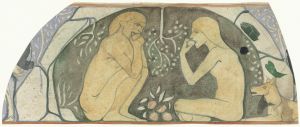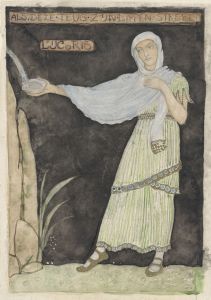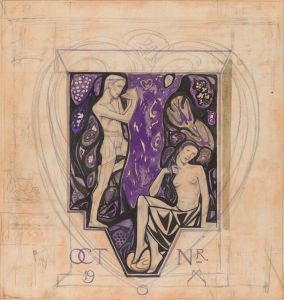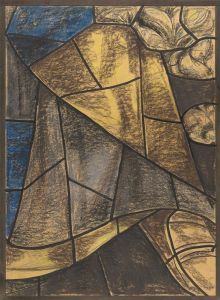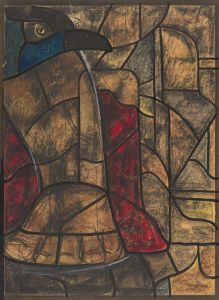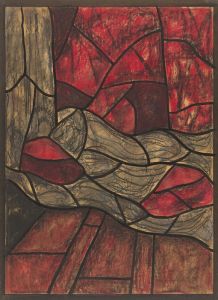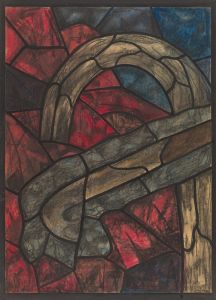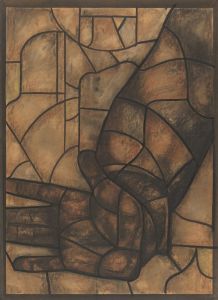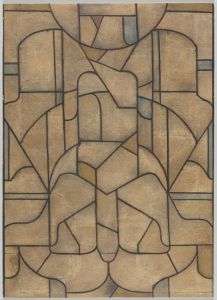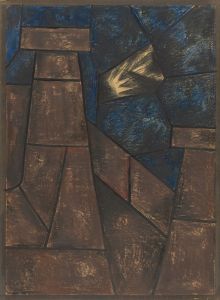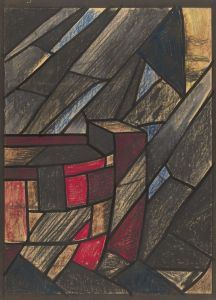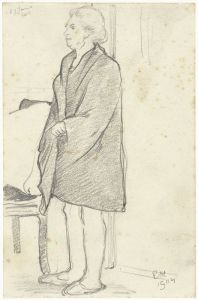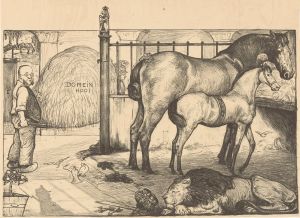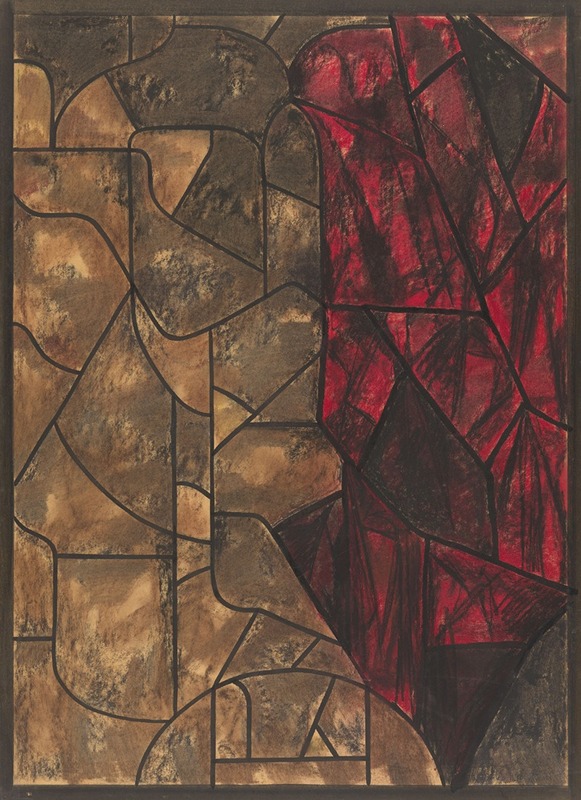
Ontwerp voor raam in het Noordertransept in de Dom te Utrecht 18
A hand-painted replica of Richard Nicolaüs Roland Holst’s masterpiece Ontwerp voor raam in het Noordertransept in de Dom te Utrecht 18, meticulously crafted by professional artists to capture the true essence of the original. Each piece is created with museum-quality canvas and rare mineral pigments, carefully painted by experienced artists with delicate brushstrokes and rich, layered colors to perfectly recreate the texture of the original artwork. Unlike machine-printed reproductions, this hand-painted version brings the painting to life, infused with the artist’s emotions and skill in every stroke. Whether for personal collection or home decoration, it instantly elevates the artistic atmosphere of any space.
Richard Nicolaüs Roland Holst was a prominent Dutch artist known for his contributions to the Arts and Crafts movement in the Netherlands. Born on December 4, 1868, in Amsterdam, Roland Holst was a versatile artist whose work spanned various mediums, including painting, drawing, and design. He was also a significant figure in the development of stained glass art in the early 20th century.
One of his notable works is the design for a stained glass window titled "Ontwerp voor raam in het Noordertransept in de Dom te Utrecht 18." This work is a design for a window in the north transept of the Dom Church in Utrecht, a significant Gothic-style cathedral in the Netherlands. The Dom Church, officially known as St. Martin's Cathedral, has been a central place of worship and an architectural landmark in Utrecht since its construction began in the 13th century.
Roland Holst's design for the stained glass window reflects his deep engagement with religious themes and his ability to integrate these themes into the architectural context of the church. His work is characterized by a strong sense of composition, vibrant use of color, and a keen attention to detail, all of which are evident in his stained glass designs. These qualities made his work stand out during a period when stained glass was experiencing a revival as an art form.
The design for the window in the Dom Church is part of a broader body of work by Roland Holst that includes numerous stained glass projects for churches and public buildings throughout the Netherlands. His approach often involved the use of symbolic imagery and allegorical figures, which were intended to convey spiritual and moral messages to the viewer. This aligns with the broader objectives of the Arts and Crafts movement, which sought to bring art into everyday life and emphasize craftsmanship and design.
Roland Holst was also an influential teacher and writer, contributing to the theoretical discourse on art and its role in society. He served as a professor at the Rijksakademie van Beeldende Kunsten in Amsterdam, where he influenced a generation of artists with his ideas and teachings. His writings often explored the relationship between art, society, and spirituality, reflecting his belief in the transformative power of art.
Throughout his career, Roland Holst received numerous commissions for stained glass windows, murals, and other decorative works. His contributions to the field of stained glass were particularly significant, as he helped to elevate the medium to new heights of artistic expression in the Netherlands. His work remains an important part of the Dutch cultural heritage, and his stained glass designs continue to be admired for their beauty and craftsmanship.
Richard Nicolaüs Roland Holst passed away on December 31, 1938, leaving behind a rich legacy of artistic achievement. His work, including the design for the stained glass window in the Dom Church in Utrecht, continues to be celebrated for its artistic and historical significance.





